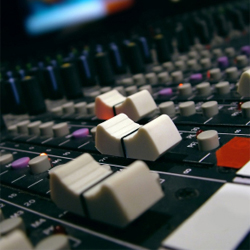Many of us make our livings providing concert-goers with the best live music experience possible. We deploy high-fidelity loudspeaker systems and microphones with the latest in digital effects and studio-quality processing in an effort to make the live show sound “just like the record.”
Only better, of course, because the excitement, visual elements, crowd response and performance spontaneity are impossible to reproduce in someone’s living room. Or is it? Let’s step back in time and examine our progress in the effort to capture the live experience for the fans to take home.
Live recording has taken many forms over the years. In the big band era, it was typical to put a single microphone out in front of the performers and hope for the best. Early refinements consisted of adding a second mic for the soloists to step up to. Performances were largely acoustic, with the possible exception of a lead vocalist, so there was no interface with the live reinforcement system.
Recordings were monophonic, and the only options available to the recordist for influencing the outcome were mic choice and location. By the way, the delivery system was usually 78 RPM vinyl records. Given the limitations, it’s amazing how many vibrant, exciting examples exist from that era of music.
Through the 1950s and 60s, there were huge changes in performance, recording and playback technology. On the performance side, the invention of the electric guitar changed everything. (In fact, a case can be made that the electric guitar spawned our entire industry.) The concept of an amplified performance where the audience heard an electronic representation of the instrument rather than the instrument itself was revolutionary in many ways.
It wasn’t long before the bass joined the ranks of amplified instruments, and all of the other musicians (with the possible exception of the drums) were using mics. This allowed shows to be staged at much larger halls than was possible in the “acoustic era,” enhancing exposure for the artist – and revenue for everyone.
This also shrank the size of performing groups as well. Previously, if the trombones needed to be louder, more trombone players were added. Now the trombone sound could simply be turned up.
THE MIGRATION
On the recording front, the big news was multiple tracks. Two- and even three- track recorders were invented. This created a need for mixing consoles, and most were built by the studio owners themselves. Some even sported advanced features like equalization.
This technology then migrated over to sound reinforcement, and it required operators. We all got a job!
Big things were happening on the playback scene as well. The hi-fi craze swept many parts of the world. Playback systems with wide frequency response and low distortion became available. The 33 RPM Long Play (LP) record allowed much longer playing times.
Meanwhile, stereophonic sound finally gave recorded music more of the spatial impact of a live performance. With stereo playback, the instruments could be spread across the soundstage to simulate sitting in front of a real band. The elements required to bring the live performance experience into the listener’s home were falling into place.
As the music business roared into the 1970s, the capability grew to duplicate the recording techniques for live events. Record companies wanted to be able to issue as many LP’s as possible from their hottest bands. One way to do this – without taking them off the road – was the live album.




















